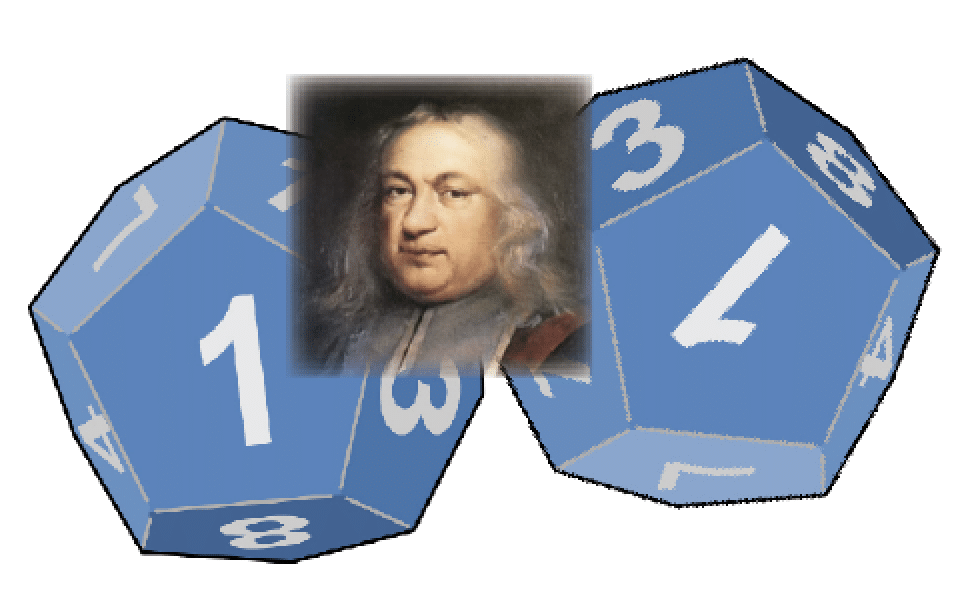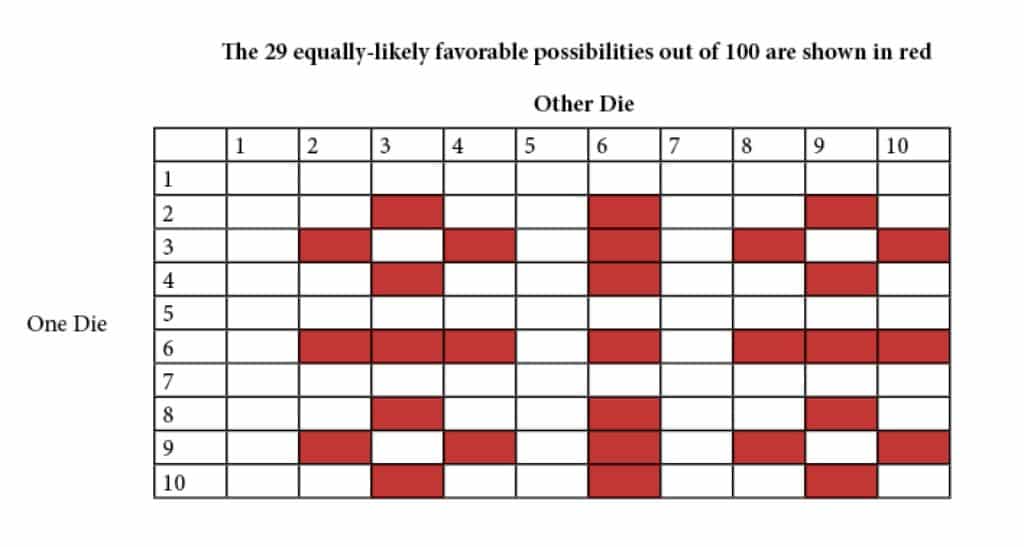Two 10-sided dice have faces numbered from 1 through 10. What is the probability that a toss of the dice will yield a multiple of 2 on one die and a multiple of 3 on the other?

Answer: Half the numbers on each die are multiples of 2, so the probability that a particular die will show a multiple of 2 is 1/2. Three of the numbers on each die are multiples of 3 (i.e., 3, 6 and 9) so the probability that a particular die will show a multiple of 3 is 3/10.
The probability that the first die will show a multiple of 2 and the other will show a multiple of 3 is 1/2 x 3/10, i.e. 3/20. The probability that the first die will show a multiple of 3 and the other will show a multiple of 2 is also 3/20. Therefore, it would seem that the probability of obtaining a multiple of 2 and a multiple of 3 would be 3/20 + 3/20, i.e., 3/10. However, 6 is both a multiple of 2 and a multiple of 3. This means that we counted it when the first die showed 6 and the second die showed 6 and counted it again when the second die showed 6 and the first die showed 6. This was a double count for the outcome (6, 6). Therefore, the probability is 3/10 less 1/100, i.e., 30/100 – 1/100 or 29/100.
The 29 equally-likely favorable outcomes are shown in the table below.

